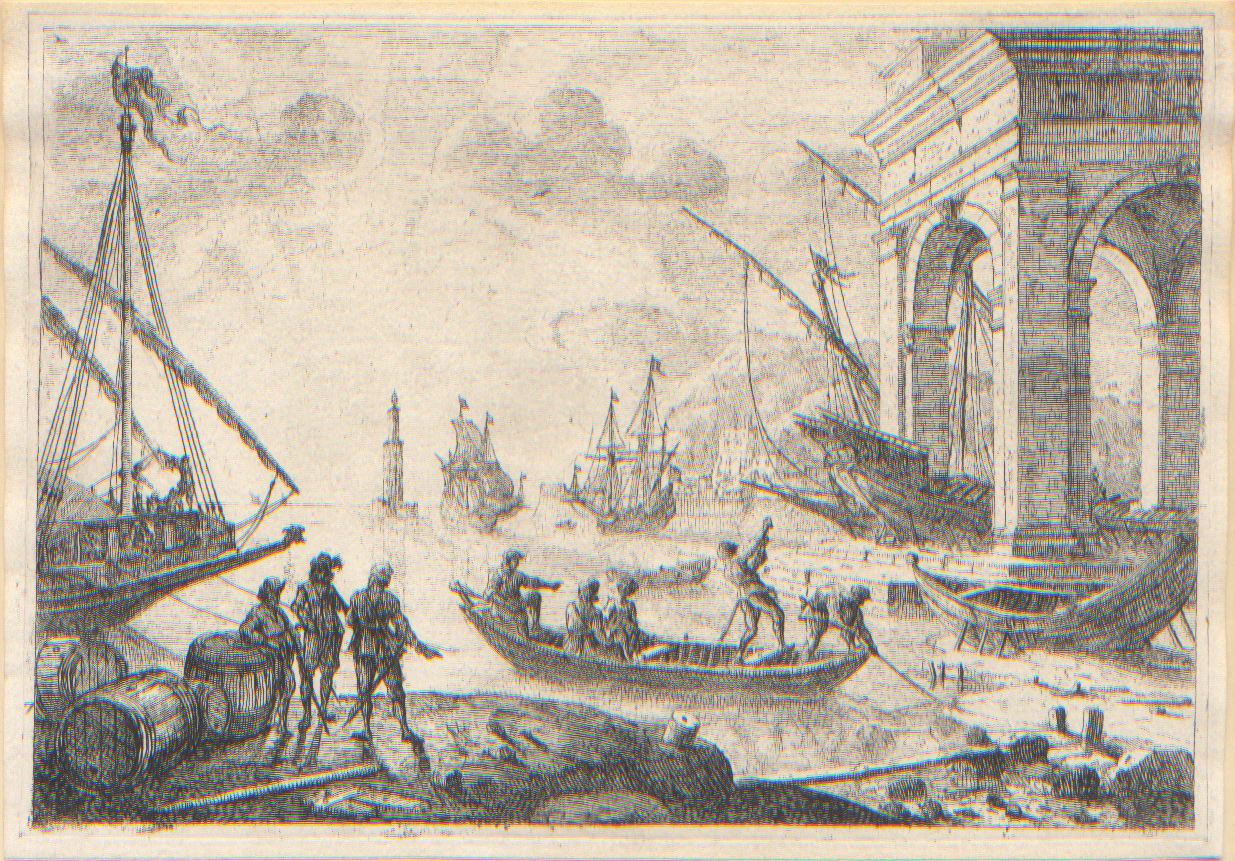
Claude Gellée, called Claude
Lorrain
 |
Le Port de Mer
au Fanal
The Seaport with a Beacon
Mannocci 37 II (R-D 11, D 11, B 13, K 138, R 22)etching, ca. 1640, a superb impression of
the very rare second state of five*, printed with refined detail,
on medium-weight laid paper, with
the full Roman
watermark of a "kneeling saint in a shield, holding a cross"
(cf. Mannocci,
Appendix 2 and 3, identifying a Roman paper dating to the late-16th to the mid-17th centuries),
with small margins, very slight soiling on the reverse, two small
strips of mounting tape along the upper edge, in quite excellent
and surprisingly fresh condition
Provenance: a private American collection
Pl. 140 x 200 mm., S. 145 x 205 mm. Mannocci gives the plate dimensions as 139 (143) x 198 (201) mm., and the impression of state two in the Bibliothèque Nationale (which we have examined) is identical: 140 x 200 mm..
